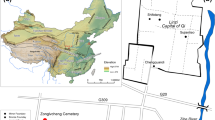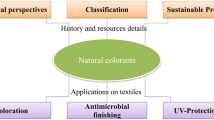Abstract
Thermal analysis has been used to study the composition of paper and paper-like materials for some decades. The application of these techniques permits to distinguish between the original paper which was used by the artists and possible forgeries. Quite often, however, the identification of the differences demands the simultaneous application of several other techniques. The present investigation includes Asiatic wood-prints from China and Japan, and lithographs of European artists, such as Pablo Picasso, Salvador Dali, and Marc Chagall. Utamaro (1753–1806) is one of the most celebrated artists in the history of the Japanese woodblock print. He became one of the famous painters of ‘Ukiyo-e’ (Ukiyo-e means transitory world). In China Utamaro's pictures were also produced. The differences are found in the kind of paper: The Japanese used Mitsumata paper, while the Chinese printed on Bamboo paper mixed with silk fibers. Hu-jü-zong (Nanking, 1619) and a group of famous Chinese painters created the book of the ‘Ten Bamboo Studio’ which contains woodblock prints as visual aids for young artists. A reprint of these woodblock prints appeared in 1717. Later, a bootleg of this book appeared in Japan (1817). The differentiation is possible by thermogravimetric investigation of the used papers. Statistic evaluations in Europe show that more than 1 000 000 bootleg copies of lithographs of Pablo Picasso, Salvador Dali, and Marc Chagall exist. Thermoanalytical measurements allow the distinction between the original artifacts and the bootlegs. Raman spectroscopy gives an additional possibility for the distinction between the applied color pigments.
Similar content being viewed by others
References
H. G. Wiedemann, Paper Technology from Egyptian, Chinese, and Mayan Cultures, National Bureau of Standards Special Publication 580, 1980, N.B.S. Washington D.C. 20234, USA.
H. G. Wiedemann, J. R. G¸nther and H. R. Oswald, Thermochim. Acta, 282 (1996) 453.
H. G. Wiedemann and A. Boller, J. Thermal Anal., 46 (1996) 1033.
S. Anso and T. Clark, The Passionate Art of Kitagava Utamaro, The British Museum Company Limited, London WC1 3QQB, UK.
I. M. Bell, R. J. H. Clark and P. J. Gibbs, Spectrochim. Acta Part A, 53 (1997) 2159.
R. J. H. Clark and P. J. Gibbs, J. Raman Spectroscopy, 28 (1997) 91.
Private collection, CH-8708, Männedorf, Switzerland.
E. Kaempfer, Geschichte und Beschreibung von Japan, Stuttgart, F. A. Brockhaus, 1974, Band II, S. 385.
J. Tschichold, Die Bildersammlung der Zehnbambushalle, E. Rentsch Verlag, Switzerland, 1970.
J. Lassaigne, Chagall, Maeght Editeur, 13, rue de Téhéran, Paris VIIIe, France 1957.
Marc Chagall, Derriè re Miror, 107 (109), Maeght Editeur, 13, rue de Téhéran, Paris VIIIe, France 1957.
H. Zollinger, Color Chemistry, Verlag Chemie, Weinheim, Germany 1987.
H. Kittel, Pigmente, Verlags Gesellschaft, Stuttgart, Germany 1960.
Douglas Cooper, Pablo Picasso, Les Déjeuneurs, Editions Cercle d'Art, Rue du Bac, Paris VII, France 1962.
Picassoís Vollard Suite, Introduced by Hans Bolliger, First published by Thames and Hudson Ltd, London, UK 1956.
Author information
Authors and Affiliations
Rights and permissions
About this article
Cite this article
Marcolli, C., Wiedemann, H.G. Distinction of Original and Forged Lithographs by Means of Thermogravimetry and Raman Spectroscopy. Journal of Thermal Analysis and Calorimetry 64, 987–1000 (2001). https://doi.org/10.1023/A:1011587316504
Issue Date:
DOI: https://doi.org/10.1023/A:1011587316504




